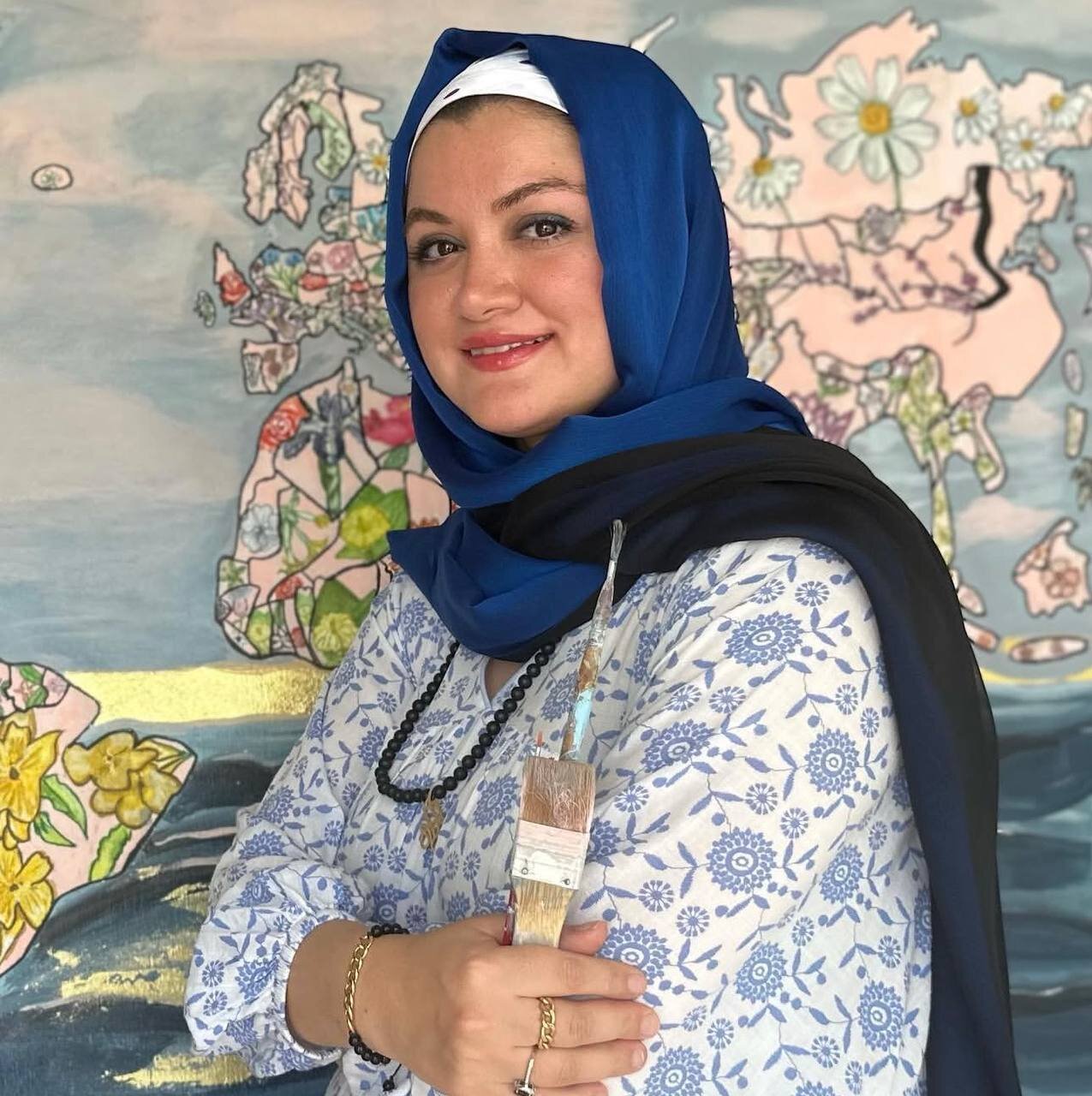“Flowers and National Symbols of the World”: an artwork for the promotion of peace and friendship

TEHRAN – Fatemeh Ahi, a painter and creator of the artwork “Flowers and National Symbols of the World,” says: “This painting is a symbol—a message advocating peace, friendship, and respect—not just toward nature, but also toward one another. We live in a world deeply thirsty for dialogue, serenity, and coexistence.”
Speaking about the inspiration behind the work, Ahi explains: “I’ve always been deeply concerned with issues like peace and the environment. The core idea behind ‘Flowers and National Symbols of the World’ was to find a way to visually express cultural diversity and national identity side by side, in a way that would feel familiar and relatable to viewers—whether they’re from Iran or from anywhere else in the world.”
She added: “Since October 2020, I decided to create this painting. I spent a full year researching and studying different cultural and natural symbols. The final piece, measuring 180 by 120 centimeters, was completed in July 2023 after two years of continuous work.”
Discussing the core symbolism, the artist remarked: “Across cultures, continents, and languages, flowers have always carried one shared message: peace. Perhaps no other symbol is as universal, borderless, and emotionally resonant. Flowers don’t speak, but they are understood everywhere. They are not flags or slogans—they come from nature and quietly deliver a message of calm, compassion, and connection. We offer flowers when we apologize, when we want to make peace, or when we try to soften painful memories. That’s why, in the story of humanity, flowers have become the most tangible symbol of peace.”
She continued: “Flowers remind us that peace is not some abstract ideal—it’s a daily choice. A choice to be gentle in a harsh world. A choice to embrace differences and to live without domination. Maybe if the world today were just a little more like flowers—there would be fewer wars and more forgiveness. Peace is a cultural and inner process. It begins in nature, flows through art, and ultimately leads us to dialogue and mutual understanding.”
Reflecting on the state of the world, she said: “We are living in a time of complex environmental crises, systemic violence, and deep cultural fragmentation. Creating images of unity, empathy, and mutual respect is our way of reminding people that we can coexist with one another—and with the earth—without needing to dominate either.”
A visual narrative of cultural diversity and peace through art
Ahi explained: “In this painting, I aimed to place each flower and national symbol within the geographic boundaries of its own country. The result is a visual narrative of cultural diversity, ecological consciousness, and the peace-loving spirit that exists across nations. Beyond its artistic dimension, the work carries a global message: the urgent need for peace, coexistence, friendship, and respect for our shared natural environment.”
She emphasized: “The flowers and symbols in the painting are far from decorative. Each one represents a piece of a nation’s culture and ecological identity. Native plants are in harmony with their own land’s soil, climate, and natural cycles. They don’t need chemical fertilizers, excessive irrigation, or synthetic pesticides. When we prioritize native vegetation, we’re not only preserving beauty—we’re actively protecting soil health, reducing erosion, and minimizing water pollution.”
Explaining further, she added: “One example is the damask rose, a national symbol of Iran, which has been deeply interwoven with Iranian traditions and rituals for centuries. In depicting this flower at the heart of Iran on the map, I wanted to express that its beauty and fragility are matched by its resilience. For me, this rose symbolizes the Iranian people—who, despite centuries of hardship, have endured with dignity, strength, and grace, safeguarding a civilization that spans thousands of years.”
Art as the last fortress of hope
She concluded: “I truly believe that art is the last fortress of hope in today’s world. If an artist can—even for a moment—remind the viewer of nature, humanity, kindness, and mutual respect, then they have fulfilled their true purpose.”
Digital projection of the artwork on Azadi Tower
The artist also announced that her work will be publicly showcased: “A digital projection of ‘Flowers and National Symbols of the World’ will be displayed on the Azadi Tower in collaboration with the Ministry of Culture and Islamic Guidance, the Ministry of Foreign Affairs, the Roudaki Foundation, and the Azadi Cultural Complex. The projection will take place on Friday, July 18, from 9:00 to 10:00 PM.”
She emphasized: “This cultural event aims to spread the message of peace and global solidarity, offering an opportunity to reflect on the power of art in strengthening dialogue between nations.”
Leave a Comment